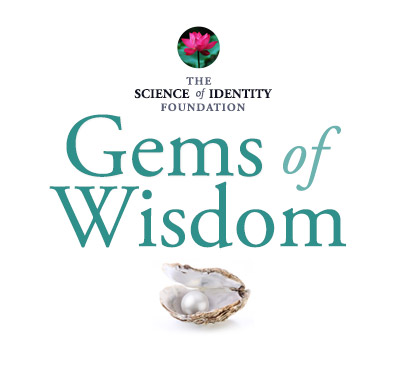Siddhaswarupananda Paramahamsa books & teachings & lectures
Sri Vallabhacarya's contribution to the Vaisnava world PUSTI MARGA
His Divine Grace
BHAKTISIDDHANTA SARASVATI THAKURA PRABHUPADA
Place: The Pusti Marga Vaisnava assembly on Clive Street, Calcutta, at the palace of the late Rajababu Damodara Dasa Verman during the annual meeting of the Pusti Margiya Vaisnava Sangha. Time: Saturday, 28th February, 1925
The previous history of meetings between the Pusti-margiyas and the Gaudiya Vaisnavas:
Honorable president of the pusti margiya assembly and all the assembled Vaisnavas! With great pleasure I announce that the Vaisnava society of Sri Pusti Marga has invited us to speak hari-katha. A meeting between Pusti Margiya Vaisnavas and Gaudiya Vaisnavas is always a pleasant one, but it's not something new. When Sri Krishna Caitanya Mahaprabhu visited Prayaga, Sri Vallabhacarya was living in the village called Adaila. He invited Sriman Mahaprabhu and His associate Sri Rupa to his home, and he and his family served them. (You can find a record of this encounter in the nineteenth chapter of Sri Caitanya-caritamrta's Madhya-lila.)
Today, four hundred years later, you have again invited the Gaudiya Vaisnavas to the home of the Pusti Margiya Vaisnavas. Sri Vallabhacarya's two sons, namely, Gopinatha and Vitthaladeva, also heard hari-katha from Sri Rupa Gosvami Prabhu. Sri Lokanatha, Sri Raghunatha Dasa, Sri Raghunatha Bhatta, and Sri Jiva Gosvami used to go to Vitthala's house in Mathura too to take darsana of the Gopala deity there. A description of the meeting between Sriman Mahaprabhu and Sri Vallabhacarya at Puri, and how Mahaprabhu instructed Vallabhacarya, can be found in Sri Caitanya-caritamrta.
The vaidhi path of regulative principles, or awe and reverence, and the raganuga, or pusti, path:
In his Sri Bhakti-rasamrta-sindhu, the great Gaudiya Vaisnavacarya, Srila Rupa Gosvami Prabhu, mentions two kinds of sadhana-bhakti, vaidhi and raganuga. Worship based on sastric injunction and following the rules and regulations out of fear Sri Vallabhacarya calls maryada-marga and the Gaudiya Vaisnavas call vaidhi-marga. Serving under the Vrajavasis who have spontaneous attachment is called raganuga-bhakti. Sri Vallabhacarya's pusti-marga is an expression of that raganuga path. On the vaidhi path, there are two and half rasas - santa, dasya, and sakhya with reverence. Although the raga is not illegal, it's not a subject matter for discussion on the path of vidhi and aisvarya. Rather, it's situated on the topmost platform of the kingdom of service. Moreover, raga includes two and half more rasas, namely, sakhya with love and affection, vatsalya, and madhurya. Persons like Sri Rupa Gosvami qualified Vallabha's son Sri Vitthalanatha for the service of Balagopala and Kisoragopala. Although these topics are not properly described in the book Vallabha Digvijaya, they are mentioned in Sri Caitanya-caritamrta.
Sri Vallabhacarya's contribution to the Vaisnava world:
Sri Vallabhacaryaji Maharaja offered a great service to the world of Vaisnavas, and so the Vaisnavas of the whole world are indebted to him. He properly refuted the arguments of Mayavada philosophy. His Anubhasya commentary on Brahma-sutra is evidence of that, Brahmavada is strongly opposed to the path of the eternal worship of Lord Vishnu. After Sri Vallabhacarya, Sri Purusottamaji Maharaja nicely preached his conclusion and also refuted Mayavada philosophy in his commentary on the Anubhasya. The book Vadavali mentions that Sri Purusottamaji Maharaja tried to engage a greatly learned Mayavadi Vedantist named Apyaya Dixita in the Supreme Lord's worship. Many of the descendants in the Sri Vallabhacarya sampradaya have taken great care to refute Mayavada philosophy.
The topmost glories of raga-marga:
Those who have narrow conceptions will not understand the beauty and sweetness of the pusti-marga. Unless one becomes equal to or more capable than the Supreme Lord, one cannot serve Him with love. The devotees in sakhya-rasa have so much love and affection that they can feed Krishna the remnants of their fruits and climb on His shoulders. Devotees in vatsalya-rasa like Yasoda can bind Krishna as their son and even beat Him. The gopis headed by the daughter of Vrsabhanu, devotees in madhurya-rasa, can serve Krishna with heart and soul. Although they are subordinate, they can make the object of their service act as a subordinate. One cannot understand these topics as long as he is filled with mundane conceptions and material knowledge. If one tries to understand them anyway, he will simply create fall into anartha.
The conceptions of Sri Ramanuja, Sri Madhva, and Sri Nimbarka:
In Sri Laksmanadesika Acarya we find only discussions of santa - and dasya-rasa in Vaikuntha. But according to the raganuga sampradayas, we clearly understand that the path of awe and reverence is extremely childish compared to friendship with love and affection.
To eradicate atheism, which was spread throughout India under different names - Buddhism, Jainism, and impersonal Mayavada - Sri Ramanujacarya preached eternal worship of the Supreme Lord in the mood of servitorship. For this the entire Vaisnava society will forever remain indebted to him. But that raganuga-bhajana was later presented as topmost was made clear by later acaryas, like Sri Madhvamuni and Sri Nimbarka.
The Gaudiya Vaisnavas desire to meet Sri Vallabha's followers:
As Sri Rupa Gosvamipada met with Gopinatha and Vitthala, and as Sriman Mahaprabhu met with Sri Vallabhacarya, so if the Gaudiya Vaisnavas and followers of Vallabha can meet with affection, each can make their lives glorious by serving with love and devotion the lotus feet of Sri Radha-Govinda, the object of service for both of them. If they meet with affection, there will be no co-wife mentality.
